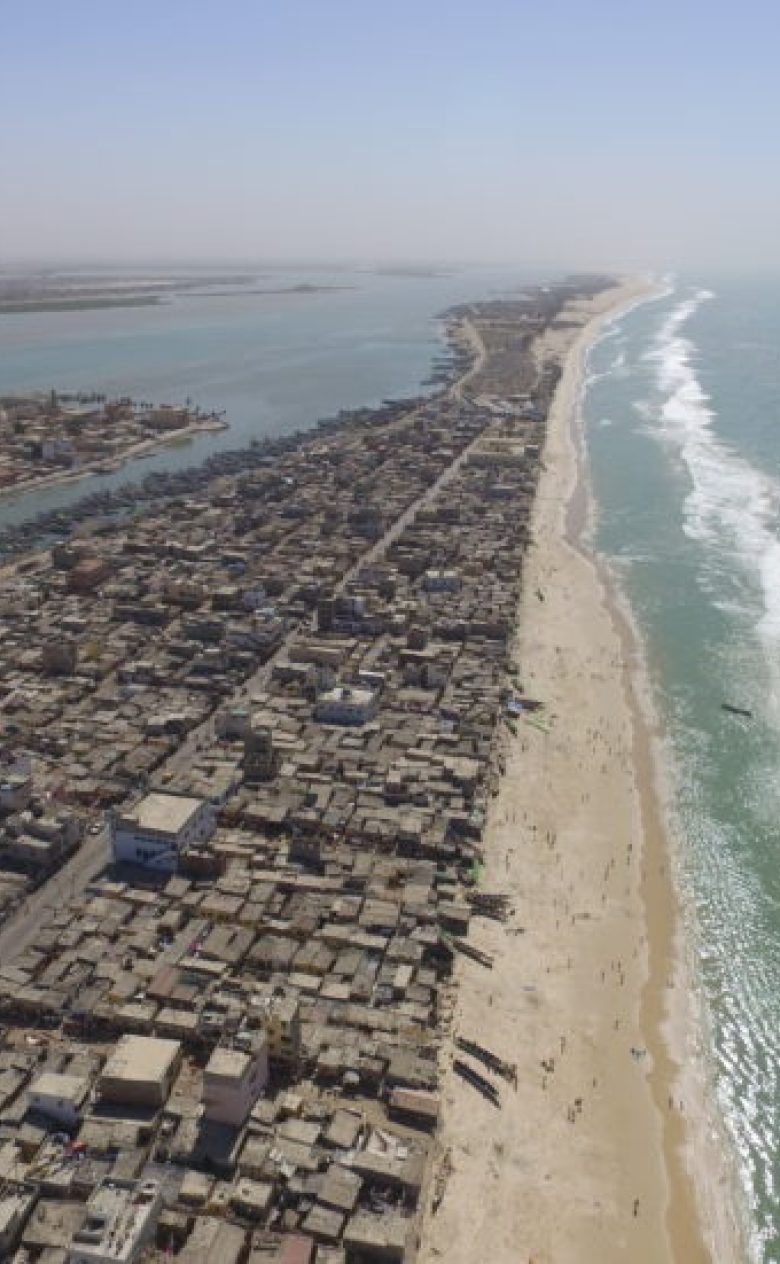Coastal Erosion in West Africa and Adaptation Planning
The West African coast mainly consists of a narrow low-lying coastal strip, over a distance of several thousand kilometers. This coastal strip is protected from the sea by a sandy barrier. Large cities have developed in the past decades in this low-lying back-barrier strip, such as Abidjan, Accra, Lomé and Cotonou.

Disruption of coastal barrier in urbanized areas
The West African coastal barrier is maintained by a strong wave-driven longshore transport of sand. This sand originates from rivers and from large coastal sand deposits. Today, however, much of the fluvial sand is retained behind river dams and/or interrupted at several locations by harbour jetties. For these reasons the sandy coastal barrier is eroding at several locations; the highest rates of retreat (in the order of 10 m/year or more) occur near river mouths and harbour jetties, i.e. in the most urbanized areas. On top of that, sea-level rise enhances coastal retreat and may be the major factor for coastal retreat by the end of the century. This will lead to the disruption of the coastal barrier if no erosion control measures are taken.
Working together against coastal retreat
In collaboration with our African and international partners, we advise governmental bodies as well as bi-lateral and multilateral agencies, by integrating our technical knowledge with governance and policy-making to solve problems in these highly complex and dynamic delta systems.

